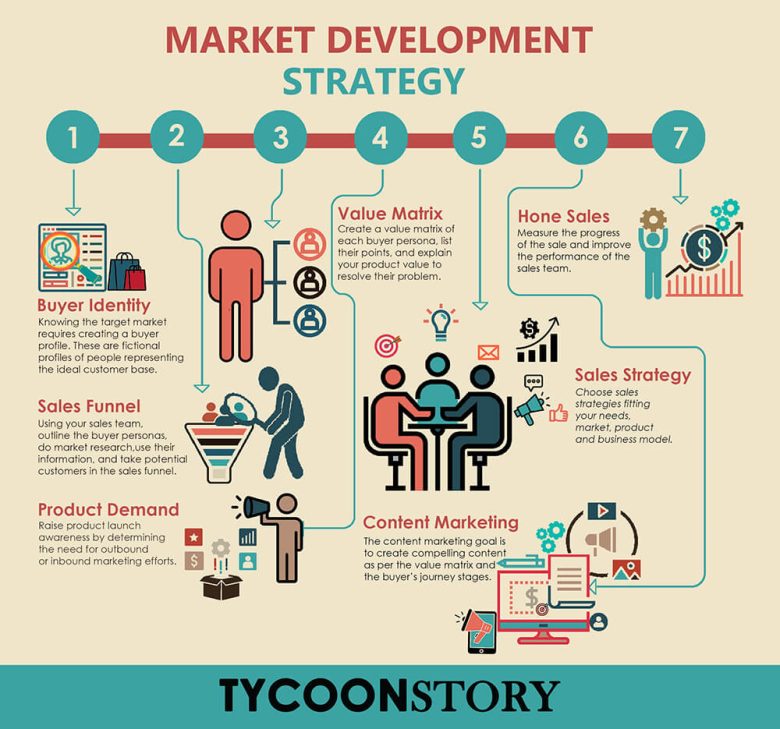Building a market development strategy for the business is to offer a unique value proposition targeting the audience to promote the customer experience. Thus, they gain a competitive advantage by outlining a pricing strategy, sales strategy, and marketing plan.
7 Steps To Build A Market Development Strategy For Business In 2022
Building a market development strategy involves hard work and research. Here are easy-to-follow steps streamlining the process.
1. Identify Buyer Personas for Your Market Development Strategy
Knowing the target market requires creating a buyer profile. These are fictional profiles of people representing the ideal customer base. They are useful in lead-generation and prospecting stages. You may research potential customer types by having problems solving them through your product. Creating buyer personas includes the demographics of the target audience market, their pain points, behaviors, job titles, organization types, and contact methods.
2. Define the Sales Funnel in Your Market Development Strategy
This information is useful for the value matrix and buyer personas. Use your sales team to outline the buyer personas, do market research, use their information, and take potential customers into the sales funnel. We will offer a value matrix for you to make a plan to move potential customers through the sales funnel stages. The stages are initial contact, business case, lead qualification, evaluation, renewal, negotiation, and closing.
3. Create a Value Matrix for Your Market Development Strategy
A marketing team creates a value matrix based on messaging and connects to problem-solving. A value matrix reasons the purpose of the stakeholders. Create a value matrix for each buyer persona, list their points, and explain your product value to resolve their problem. A clear message describes how the matrix tool recognizes the journey of the buyer.
4. Generate Product Demand in Your Market Development Strategy
Raise product launch awareness by determining the need for outbound and inbound marketing efforts. Pulling in leads is an inbound strategy and expresses interest in the service or product of a company. The buyer begins the conversation and you can focus on personalizing the sales process to meet the buyer’s needs and desires. The outbound strategy concentrates on lead prospecting and market research. It relates to people who do not express interest in the product or service of a company. Here is the first initiation of communication from the sales reps with potential customers, they may be by email or cold calling.
5. Select a sales strategy
sales strategies and you can process the sale using potential customers. Choose sales strategies that fit your needs, market, product, and business model. A medium-complexity product at a medium price point may use an inside sales strategy as the business strategy. You can communicate with customers and pursue a sale. For high price points and complex products, use an outside sales strategy to travel outside their office to meet potential customers. A self-service sale is appropriate for low-price point simple products and does not need salespeople. Your potential customers do not need coaxing from a salesperson.
6. Content Marketing Strategy
Choosing an inbound marketing strategy implies the need to generate product demand. You may develop a content marketing strategy. It is an optimal way of attracting the target audience. Content marketing is to create compelling content as per the value matrix and the buyer’s journey stages. With SEO higher ranking, your potential customers can identify your products.
7. Hone sales process
Measure the progress of the sale and improve the performance of the sales team. Use key performance indicators such as sales volume, conversation rate, and time to ensure hitting the goals. Use metrics and analyze ways to maximize your profit earned and shorten the sales cycle.
Outlining a business strategy helps customer retention. Acquire new customers and repeat business with existing customers. Use marketing techniques such as customer loyalty programs and upselling to incentivize repeat business. Thus, sealing long-term relationships with customers.





